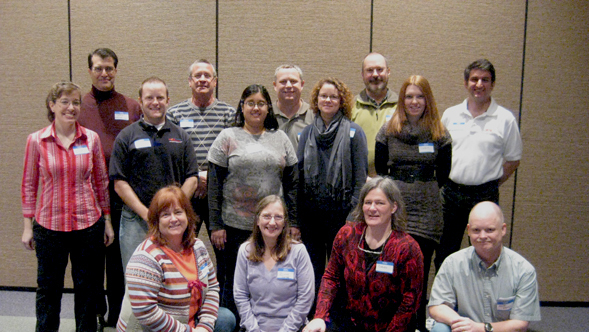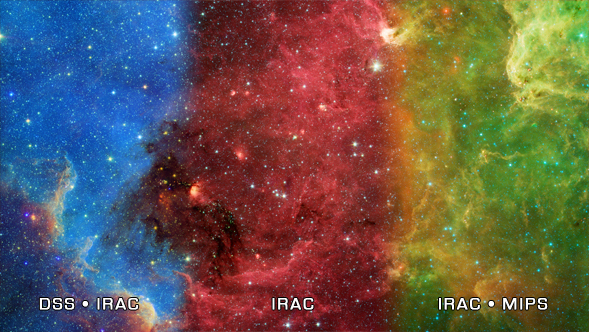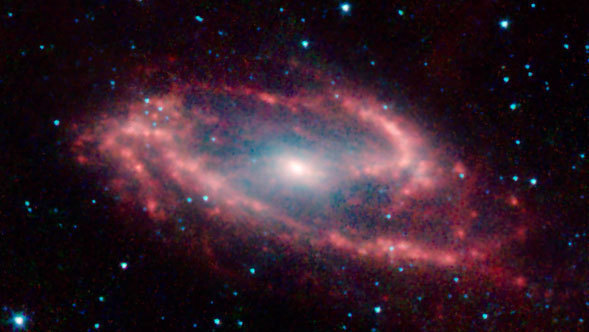
By Luisa Rebull | January 3rd, 2011
A few weeks ago, I mentioned here that the NITARP class of 2010 was taking NINE posters to the AAS meeting in a few weeks. So proud of them! Here are more words about each one, with a link to their formal abstract at the AAS website. Eventually, I'll get copies of all the posters and add them to the NITARP website, but that probably won't be until after the meeting!
Also, today we are releasing a great feature article on the NITARP presence at the AAS. Please go check that one out too!
I am taking a poster with an overview of the NITARP program: 248.11 - Rebull et al., "Authentic Astronomy Research Experiences for Teachers: the NASA/IPAC Teacher Archive Research Program (NITARP)". No, this doesn't count as "one of the nine", but it does include an overall summary of the program. The purpose of this program is to provide educators (mostly but not exclusively grade 8-13 classroom teachers) with an authentic research experience in astronomy. In exchange, we ask educators to leverage this experience via providing professional development for their colleagues in their local area, or other similar activities. It involves several trips to collaborate with research astronomers and present the research results (at AAS meetings), all of which are paid for by the program.
OK, now, on with the nine, in the order in which they'll appear at the meeting:
142.43 - Gorjian et al., "Determination of the Infrared Luminosity of Active Galactic Nuclei (AGN)". Using archival data from the Spitzer and GALEX Space Telescopes we have plotted an ultraviolet-infrared color-magnitude diagram for AGN.
248.10 - Piper et al., "Educational Aspects of Searching for Variable Stars in the Mid-IR Sky". Using archival Spitzer Space Telescope Infrared Array Camera (IRAC) data, our team of students, educators and astronomers attempted to discover new variable stars in mid-infrared (3-8 micron) wavelengths. Our educational goal was to learn, and then disseminate, methods to (a) utilize various image processing software tools and (b) subsequently analyze and display gathered data in a meaningful form in order to identify variable stars.
248.12 - Petach et al., "Using NASA Archives in High Schools to Study AGN". Our team developed and investigated whether the ultraviolet light emitted from the accretion disk of an Active Galactic Nucleus (AGN) is correlated with the infrared emission from its surrounding dust. Students are eager to have these research opportunities and will make use of data archives to carry out research projects to answer relevant questions. This poster will highlight the process the students and teachers went through and the tools they developed along the way.
248.13 - Hoette et al., "Multi-Sensory Approach to Search for Young Stellar Objects in CG4". Individuals with disabilities - specifically individuals who are deaf or hard of hearing (DHH) and/or blind and visually-impaired (BVI) - have traditionally been underrepresented in Science, Technology, Engineering, and Math fields. Our team worked on finding candidate young stars in the CG4 Nebula in Puppis. During the project, the students, scientists and teachers developed a number of techniques for learning the necessary science as well as doing the required data acquisition and analysis. Collaborations were formed between students with disabilities and their non-disabled peers to create multi-media projects. Ultimately, the projects created for our work with NITARP will be disseminated through our professional connections in order to ignite a passion for astronomy in all students - with and without disabilities.
257.08 - Seebode et al., "Ring-like Structures Around Epsilon Aurigae Companion": Spectroscopic measurements of epsilon Aurigae during the current eclipse suggest the existence of ring-like structures in the dust disk surrounding the companion B star. Our ring-like structures agree with those suggested by Leadbeater and Stencel (2010, astroph/1003.3617). The width and location of the rings are consistent with the theoretical rings proposed by Ferluga (1990, A&A, 238,270) based on observations of the 1982 eclipse.
340.08 - Johnson et al., "Searching for Young Stellar Objects in CG4": We used archival Spitzer infrared data to look for new young stellar objects (YSOs) in Cometary Globule 4 (CG4) in Puppis. We discovered 25 YSO candidates, which include 6 independent rediscoveries of previously-identified YSOs and 19 entirely new YSO candidates. We will need to obtain follow-up spectra of all of the new ones to confirm or reject them as YSOs, but at least 10 of the 19 seem to be reasonably likely to be legitimate YSOs.
342.03 - DeCoster et al., "Spitzer Observations of Stellar Variability in the Mid-Infrared": We used archival mid-infrared data from the Spitzer Space Telescope to search three Infrared Array Camera (IRAC) fields containing exoplanet host stars (Tres-2, Hat-P-1b, and Tres-4) for additional stars that vary in the mid-infrared. We found one star in the Tres-4 field that displayed periodic variability (P = 0.084 days) when phase-folded. We found that approximately 0.4% of stars observed in the mid-infrared, down to our sensitivity level, exhibit variability.
346.07 - Mallory et al., "The NASA/IPAC Teacher Archive Research Program (NITARP) at Pierce College". Our team worked with archival Spitzer, 2MASS, and optical data to look for young stars in CG4, part of the Gum Nebula. Researching a science problem by utilizing data sets, then applying numerical analysis with programs, and with persistence, resulted in obtaining a big-picture of the process of star birth and development, and taught us the process of science problem solving.
346.09 - Stanford et al., "A Tool For Exploring Spectral Energy Distributions in the Classroom": The calculation of spectral type, temperature, radius and distance is often the first step in the study of stars and stellar systems. Spectral energy distributions (SEDs) are of paramount importance in the determination of these quantities. We have created an innovative tool that enables high school and college physics and astronomy instructors and their students, to evaluate these parameters. As an added benefit, students gain further insight into Wien's and Stefan-Boltzmann's Laws. The tool is in Google Documents format, easily downloadable and modifiable by interested parties.
 North America Nebula in IR
North America Nebula in IR
 My First (Galaxy) Relationship
My First (Galaxy) Relationship



